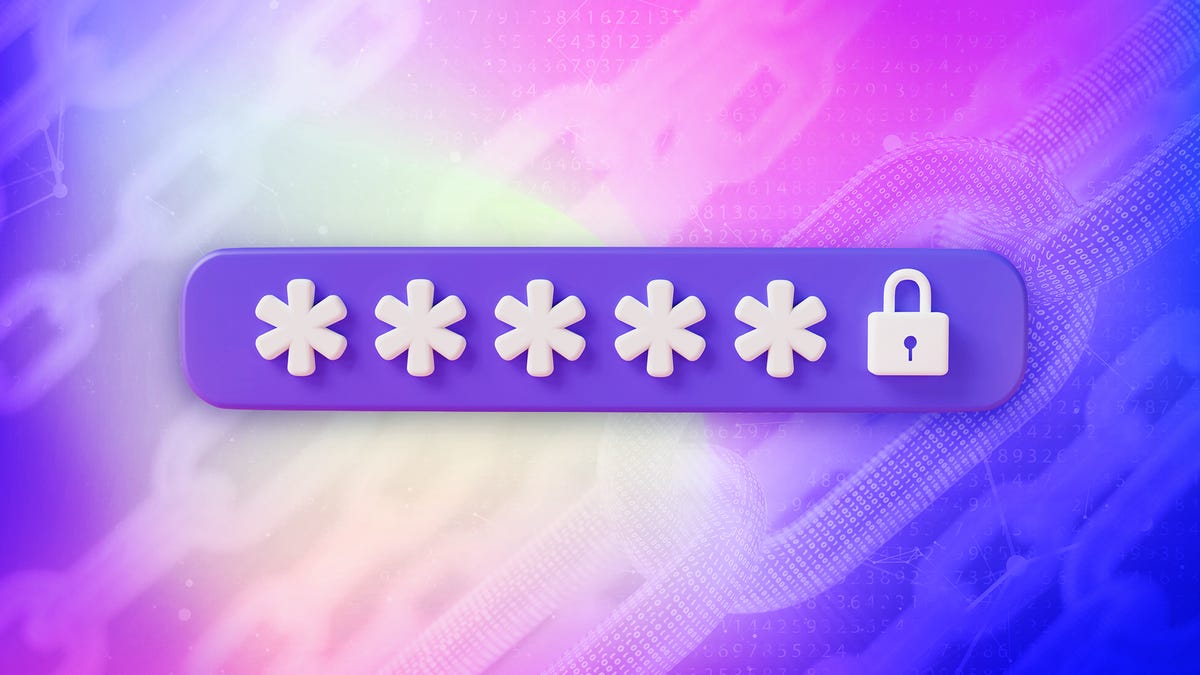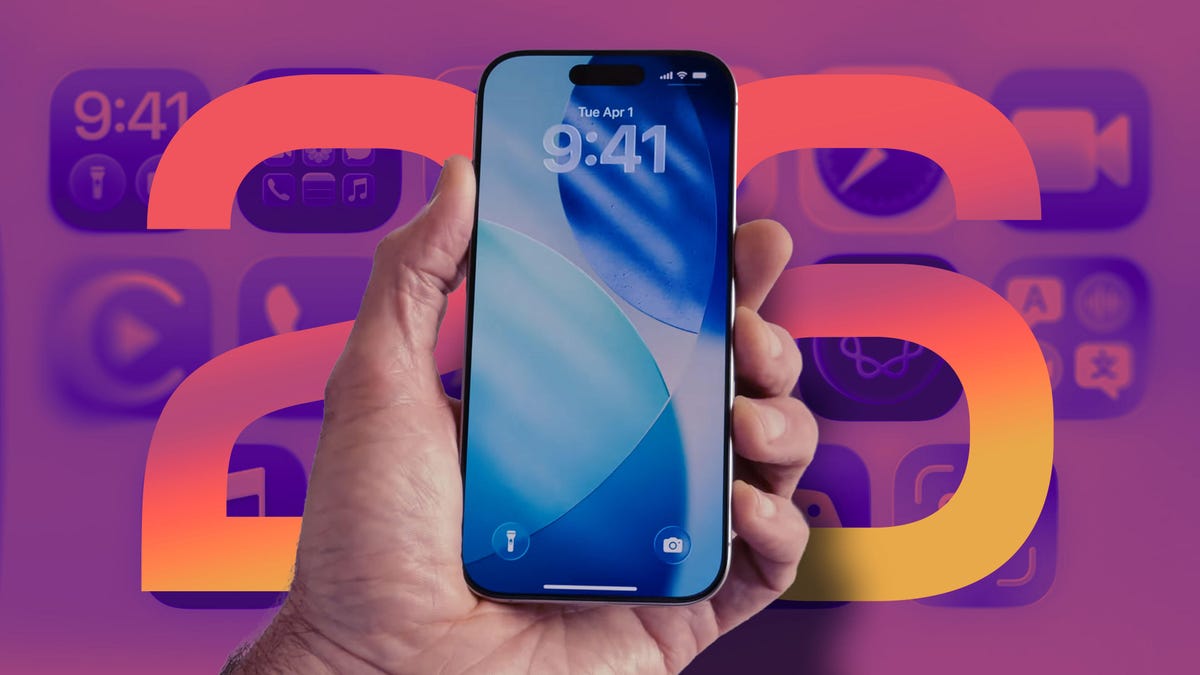Technologies
Time’s Almost Up: Microsoft Will Delete Your Passwords on Aug. 1. What to Do ASAP
In a few days, your passwords will no longer work. The tech giant is moving to a login method that CNET experts believe is safer.

If you use Microsoft Authenticator to manage your passwords, the clock is ticking.
On Aug. 1, the app won’t store or manage your passwords anymore. That means you won’t be able to save passwords or use two-factor authentication or auto-fill.
And if the Authenticator app was your go-to password manager, you’ll need to find a new one. Microsoft is moving to a login method we’re becoming more familiar with: passkeys. Instead of a mix of letters, symbols and numbers, you’ll use PINs, fingerprint scans, facial recognition or a pattern on your device’s lock screen to log in to your accounts. Attila Tomaschek, a CNET software senior writer and digital security expert, believes it’s a safer option compared with the risky password practices we use.
By the numbers, 49% of US adults have bad password habits, according to a CNET survey. Having a password you use for several accounts or that’s easy to guess can put you at risk of hackers stealing your data.
There’s less than a week before the big switch. So it’s time to figure out how passkeys will work with Microsoft and to pick a new password manager. Here’s what you need to know to get started.
Microsoft Authenticator will stop supporting passwords on Aug. 1
Microsoft Authenticator houses your passwords and lets you sign into all your Microsoft accounts using a PIN, facial recognition like Windows Hello, or other biometric data like a fingerprint. Authenticator can be used in other ways, such as verifying you’re logging in if you forgot your password, or using two-factor authentication as an extra layer of security for your accounts. In June, the company stopped letting users add passwords to Authenticator.
As of this month, you won’t be able to use the autofill password function. And next month, you’ll no longer be able to use saved passwords.
If you still want to use passwords instead of passkeys, you can store them in Microsoft Edge. However, CNET experts recommend adopting passkeys during this transition. «Passkeys use public key cryptography to authenticate users, rather than relying on users themselves creating their own (often weak or reused) passwords to access their online accounts,» Tomaschek said.
Why passkeys are a better alternative to passwords
So what exactly is a passkey? It’s a credential created by the Fast Identity Online Alliance that uses biometric data or a PIN to verify your identity and access your account. Think about using your fingerprint or Face ID to log into your account. That’s generally safer than using a password that is easy to guess or susceptible to a phishing attack.
«Passwords can be cracked, whereas passkeys need both the public and the locally stored private key to authenticate users, which can help mitigate risks like falling victim to phishing and brute-force or credential-stuffing attacks,» said Tomaschek.
Passkeys aren’t stored on servers like passwords. Instead, they’re stored only on your personal device. More conveniently, this takes the guesswork out of remembering your passwords and the need for a password manager.
How to set up a passkey in Microsoft Authenticator
Microsoft said in a May 1 blog post that it will automatically detect the best passkey to set up and make that your default sign-in option. «If you have a password and ‘one-time code’ set up on your account, we’ll prompt you to sign in with your one-time code instead of your password. After you’re signed in, you’ll be prompted to enroll a passkey. Then the next time you sign in, you’ll be prompted to sign in with your passkey,» according to the blog post.
To set up a new passkey, open your Authenticator app on your phone. Tap on your account and select «Set up a passkey.» You’ll be prompted to log in with your existing credentials. After you’re logged in, you can set up the passkey.
Other password manager alternatives
Since Microsoft will get rid of all of your passwords in two weeks, you’ll need a new place to store your passwords safely. Tomaschek has a few of the best password manager recommendations after testing and reviewing several.
The top recommendation is Bitwarden for its transparency. It’s open-source and audited annually. From a price perspective, the free plan lets you store infinite passwords across unlimited devices. The free plan also includes features most password managers would charge for, including password sharing and a username and password generator.
Bitwarden’s upgraded plans have other upgraded features that could be worth the cost, too.
Personally, Tomaschek has been using 1Password for a while, and he likes the interface and family plan. Even though it’s second on the list, Tomaschek says it’s just as good as Bitwarden.
Technologies
Amazon Prime Is Ending Shared Free Shipping. What to Know and When It Happens
How Prime Invitee program’s end could affect your free deliveries.

If you’ve been using someone else’s Amazon Prime membership for free shipping, but you don’t live in the same house, you may need to pay another subscription fee soon. According to Amazon’s updated customer service page, the online retail giant is ending its Prime Invitee benefit-sharing program Oct. 1.
Amazon’s Prime Invitee program is being replaced by Amazon Family, as reported earlier by The Verge. It includes many of the same benefits, but Amazon Family only works for up to two adults and four children living in the same «primary residential address» — a shared home.
You’ll still be able to use free shipping to send gifts elsewhere, but your Prime Invitees will no longer be able to use the perk.
Don’t miss any of our unbiased tech content and lab-based reviews. Add CNET as a preferred Google source.
Amazon isn’t the first company to prevent membership sharing between family and friends. The e-commerce giant is just the latest to follow Netflix’s account-sharing crackdown. While it’s unclear whether this change will work for Amazon, Netflix gained over 200,000 subscribers following its policy change. We also saw a similar account-sharing crackdown with Disney Plus and YouTube Premium.
Read more: More Than Just Free Shipping: Here Are 19 Underrated Amazon Prime Perks
What the Amazon Prime shipping crackdown means for you
If you’re the beneficiary of someone else’s Prime Invitee benefits, you have one more month to take advantage of the current program before the changes take effect.
Starting in October, you’ll have to get your own Amazon Prime subscription to benefit from the company’s free shipping program. First-time subscribers get a year of Prime membership for $15, but you’ll be stuck shelling out $15 a month to maintain your subscription thereafter.
Read more: Your Free Pass to Prime Day Deals (No Membership Required)
Why is Amazon ending the Prime Invitee program?
This move follows shortly after Reuters reported that Amazon’s Prime account signups slowed down recently despite an extended July Prime Day event. While the company reported blowout sales numbers, new Prime subscriptions didn’t meet internal expectations. In the US, they fell short of last year’s signup metrics.
According to Reuters, Amazon registered 5.4 million US signups over the 21-day run-up to the Prime Day event, around 116,000 fewer than during the same period in 2024, and 106,000 below the company’s own goal, a roughly 2% decline in both metrics.
By forcing separate households to have their own subscriptions, Amazon could be looking to attract more Prime accounts after previously failing to do so.
The new Amazon Family program (previously known as Amazon Household) offers Prime benefits to up to two adults and four children in a single home, including free shipping, Prime Video, Prime Reading and Amazon Music. The subscription also includes benefits for certain third-party companies, such as GrubHub.
Technologies
Pokemon TCG Pocket’s Pack Points System Needs an Overhaul Yesterday
The pack-opening pity points system is pitiful. There’s a very easy way to improve it.

Pokemon TCG Pocket is more than a mobile game: It’s a money-making machine. The virtual trading card app raked in more than $900 million in its first six months, eclipsing even Pokemon Go’s revenue in the same post-release time span. As it turns out, fake Pokemon cards are just as much of a hot commodity as the real thing.
People love ripping open card packs, hunting down ones with their favorite illustrations of fan-favorite Pokemon. It feels great to beat the odds by pulling an elaborately-inked full art or a shiny secret rare. But it really starts to irk me when I’m missing only one or two cards from a set and I can’t get lucky enough to pull them out of a pack.
Pokemon TCG Pocket has a «pity points» system that’s supposed to make this feel less terrible: Every time you open a pack, you earn five pack points, which you can directly trade in for a card of your choosing.
You can trade in 35 points for a common card, but if you want to get the rarest cards from a set, they could eat up 500 points, 1,250 points or even a whopping 2,500 points each. That means you’d have to rip open 500 card packs in order to earn a single copy of one of Pokemon TCG Pocket’s rarest cards.
It sounds absurd (and it is), but that’s to be expected for a free-to-play game, especially one where the developer makes money by encouraging players to pay for extra card pulls. My real big issue with pack points is that they’re restricted to the expansion set you earned them in.
For example, I have 210 pack points for the latest card set, Secluded Springs, and I’ve been exclusively pulling those packs since it was released. I also have 700 pack points for the game’s first-ever expansion Genetic Apex — but those points are locked to Genetic Apex, and can’t be used for any other set. I’ve accrued hundreds of pack points, but they’re essentially useless to me because they won’t help me complete the sets I’m still missing cards in.
Pokemon TCG Pocket expansion sets are released on a monthly basis, which means no one really has time to earn enough pack points for a rare card before the next shiny slate of cards is dangled in front of your eyes. It propagates a desperate sense of FOMO that I’ve criticized in the past, but there’s a simple solution that would make the problem disappear overnight.
Instead of locking pack points to any one set, they should be an account-wide currency instead. Every time you earn pack points, they should be added to one large pool that you can use on any of the in-game card sets. That way, players wouldn’t have to feel a manufactured sense of guilt for ripping open packs from older sets.
While it’s customary for gacha games to have a pity system that guarantees a certain reward after a certain amount of pulls, it’s by no means a requirement for these games to have these systems. In a sense, I’m grateful that the pack points exist in Pokemon TCG Pocket in the first place.
I think we should always argue for a more consumer-friendly experience in modern gaming. Overhauling the pity system so that pack points can be used universally across all of the in-game card sets will make the game fairer and give more players a real chance to get the rarest cards.
It creates a greater sense of parity between free-to-play and paying players, and it might even cause some people to spend more money on pack openings to boot. Universal pack points are a win-win for players and DeNA alike.
Technologies
Adaptive Power in iOS 26 Could Boost Your iPhone Battery Life, but It’s Not on All Models
The new iPhone 17 models get better battery life, partly through this iOS 26 feature that is available on other iPhones, too.

When Apple announced the iPhone 17, iPhone 17 Pro and iPhone Air earlier this month, it touted improved battery life across the board and «all-day» battery for the iPhone Air, which has a physically smaller battery to fit inside its thin design. Some of that is due to physically larger batteries, but a new feature called Adaptive Power in iOS 26 is also contributing. And it’s available on any iPhone capable of running Apple Intelligence.
Currently, the iPhone uses as much power as it needs to perform its tasks. You can extend the battery life by doing a number of things, such as decreasing screen brightness and turning off the always-on display. Or, if your battery level is starting to get dire, you can activate Low Power Mode, which reduces background activity like fetching mail and downloading data in addition to those screen adjustments. Low Power Mode also kicks in automatically when the battery level reaches 20%.
Don’t miss any of our unbiased tech content and lab-based reviews. Add CNET as a preferred Google source.
If Low Power Mode is the hammer that knocks down power consumption, Adaptive Power is the scalpel that intelligently trims energy savings here and there as needed. Based on Apple’s description that accompanies the control, the savings will be felt mostly in power-hungry situations such as recording videos, editing photos or perhaps even playing games:
«When your battery usage is higher than usual, iPhone can extend your battery life by making performance adjustments, such as lowering display brightness, allowing some activities to take longer, or turning on Low Power Mode at 20%.»
Apple says Adaptive Power takes about a week to analyze your usage behavior before it begins actively working. It works in the background without needing any management on your part. The iPhone user guide describes it as follows: «It uses on-device intelligence to predict when you’ll need extra battery power based on your recent usage patterns, then makes performance adjustments to help your battery last longer.»
Which iPhone models can use Adaptive Power?
The feature uses AI to monitor and choose when its power-saving measures should be activated, so that means only phones compatible with Apple Intelligence get the feature. These are the models that have the option:
• iPhone 17
• iPhone 17 Pro and iPhone 17 Pro Max
• iPhone Air
• iPhone 16 and iPhone 16 Plus
• iPhone 16 Pro and iPhone 16 Pro Max
• iPhone 16e
• iPhone 15 Pro and iPhone 15 Pro Max
Although some iPad and Mac models support Apple Intelligence, the feature is only available on iPhones.
How to turn Adaptive Power on
On the iPhone 17, iPhone 17 Pro, iPhone 17 Pro Max and iPhone Air, Adaptive Power is on by default. For other models, you must opt in to use it. In iOS 26, you’ll find the Adaptive Power toggle in Settings > Battery > Power Mode. If you want to be alerted when the feature is active, turn on the Adaptive Power Notifications option.
Adaptive Power sounds like an outgrowth of Gaming Mode, introduced in iOS 18, which routes all available processing and graphics power to the frontmost app and pauses other processes in order to deliver the best experience possible — at the notable expense of battery life.
What does this mean for your charging habits?
Although we all want as much battery life as possible all the time, judging by the description, it sounds as if Adaptive Power’s optimizations will not always be active, even if you leave the feature on. «When your battery usage is higher than usual» could include a limited number of situations. Still, considering that according to a CNET survey, 61% of people upgrade their phones because of battery life, a feature such as Adaptive Power could extend the longevity of their phones just by updating to iOS 26.
I also wonder whether slightly adjusting display brightness could be disruptive, but in my experience so far, it hasn’t been noticeable. Because the feature also selectively de-prioritizes processing tasks, the outward effects will likely be minimal.
Read more: Adaptive Power in iOS 26 Could Save the iPhone 17 Air From This Major Pitfall
We’ll get a better idea about how well Adaptive Power works as more people adopt iOS 26 and start buying new iPhone models. Also, remember that shortly after installing a major software update, it’s common to experience worse battery life as the system optimizes data in the background; Apple went so far as to remind customers that it’s a temporary side effect.
-

 Technologies3 года ago
Technologies3 года agoTech Companies Need to Be Held Accountable for Security, Experts Say
-

 Technologies3 года ago
Technologies3 года agoBest Handheld Game Console in 2023
-

 Technologies3 года ago
Technologies3 года agoTighten Up Your VR Game With the Best Head Straps for Quest 2
-

 Technologies4 года ago
Technologies4 года agoVerum, Wickr and Threema: next generation secured messengers
-

 Technologies4 года ago
Technologies4 года agoGoogle to require vaccinations as Silicon Valley rethinks return-to-office policies
-

 Technologies4 года ago
Technologies4 года agoBlack Friday 2021: The best deals on TVs, headphones, kitchenware, and more
-

 Technologies4 года ago
Technologies4 года agoOlivia Harlan Dekker for Verum Messenger
-

 Technologies4 года ago
Technologies4 года agoiPhone 13 event: How to watch Apple’s big announcement tomorrow
